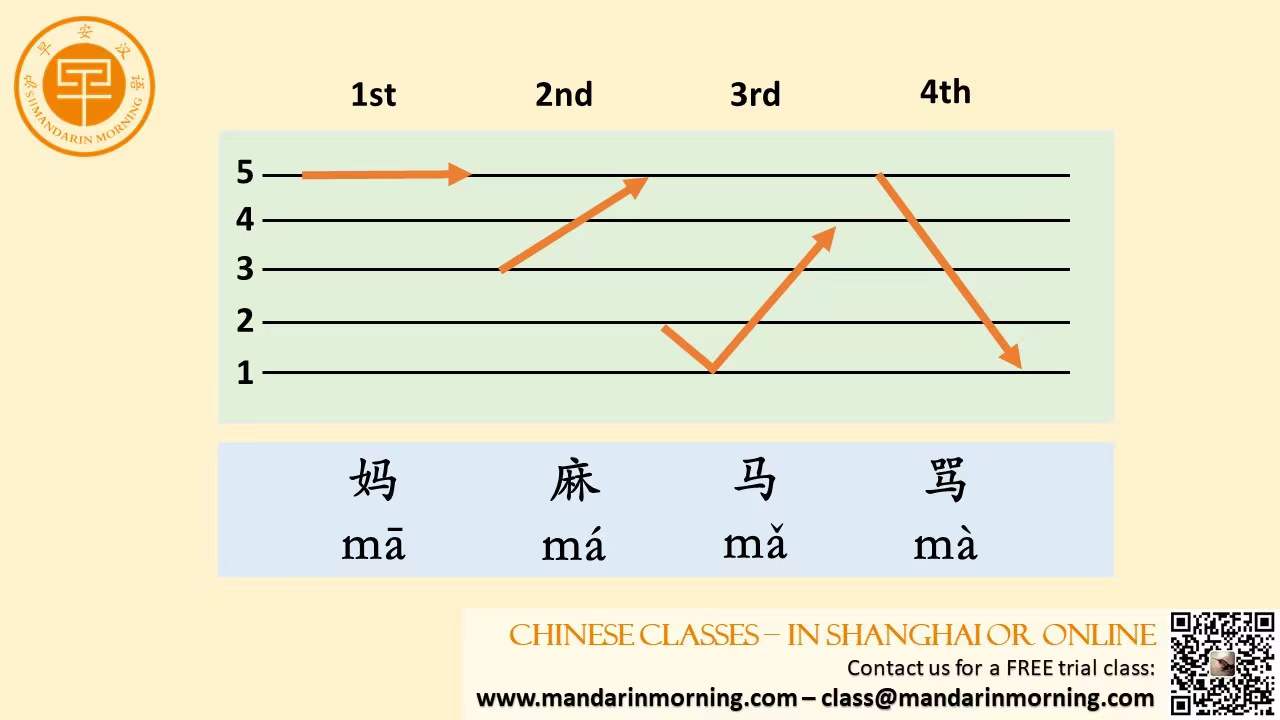Are you struggling with remembering the Chinese tones while learning Mandarin Chinese? There are some methods that might help you to never forget tones in your life. Say The Tones with Gestures For those that are just starting out, this strategy will keep your tone pronunciation in check. All you have to do is mimic the movement of the tone with either your finger or your whole hand, kind of like a conductor of an orchestra. While this may look or feel silly, the gestures provide signals on the kind of emphasis that needs to be placed on the character. These are the gestures you can use as you’re reading characters with different tones First tone (—) — Draw a straight line above your head to keep your pitch high and level. Notice how characters in the first tone tend to sound longer than the others, so try to draw a longer line or draw the imaginary line slowly. Second tone (/) — Draw a diagonal quickly from the bottom left to the top right to slightly increase the pitch of your voice. Third tone (V) — Draw a “V” or a “U” as a guide to scoop or drop, and then raise your pitch. Fourth tone (\) — Draw a diagonal quickly from the top left to the bottom right to add a hard stress to the pinyin. Fifth/Neutral tone (.) — Draw a dot to keep the pronunciation short and succinct. Practice Tones in Pairs The tones are pretty easy to pronounce when you say them individually. To improve your fluency in reading and speaking, you’ll need to start practicing them in pairs. You’ll want to start off with easier pairs, which consist of the first and the fourth tones, then move on to more difficult pairs (first/fourth tone with second/third tone). The second and third tones are often the ones most people muddle up, so pairing tones in terms of difficulty will help you get used to various combinations and proper pronunciations that will appear in future texts. You’ll come across a myriad of tone combinations in your lessons, so you can hand-pick your own words for verbal practice. And here are some other reasons why tone pair drills work like steroids for your tones: They’re readily accessible in your brain. Once you memorize a few of them, you’ll find yourself repeating them to yourself everywhere you go. They actually mirror real Chinese. In Mandarin Chinese, tones don’t exist in isolation either. So actually, you could argue that tone pair drills are just the natural intermediate step to learning complete sentences. They’re more difficult and require you to think through the logic. Another challenge with Chinese tones is that they aren’t static. They are dynamic and change based on the sequence of tones. You can’t learn that from learning the tones individually. They expose weaknesses. They focus you to be sharper in drawing distinctions between the four tones, so it’s harder to just muddle through. They let you target weaknesses with precision. By focusing your time and energy where you need it, you can learn and master the tones much faster. You need more methods to remember tones? Read part 2! |